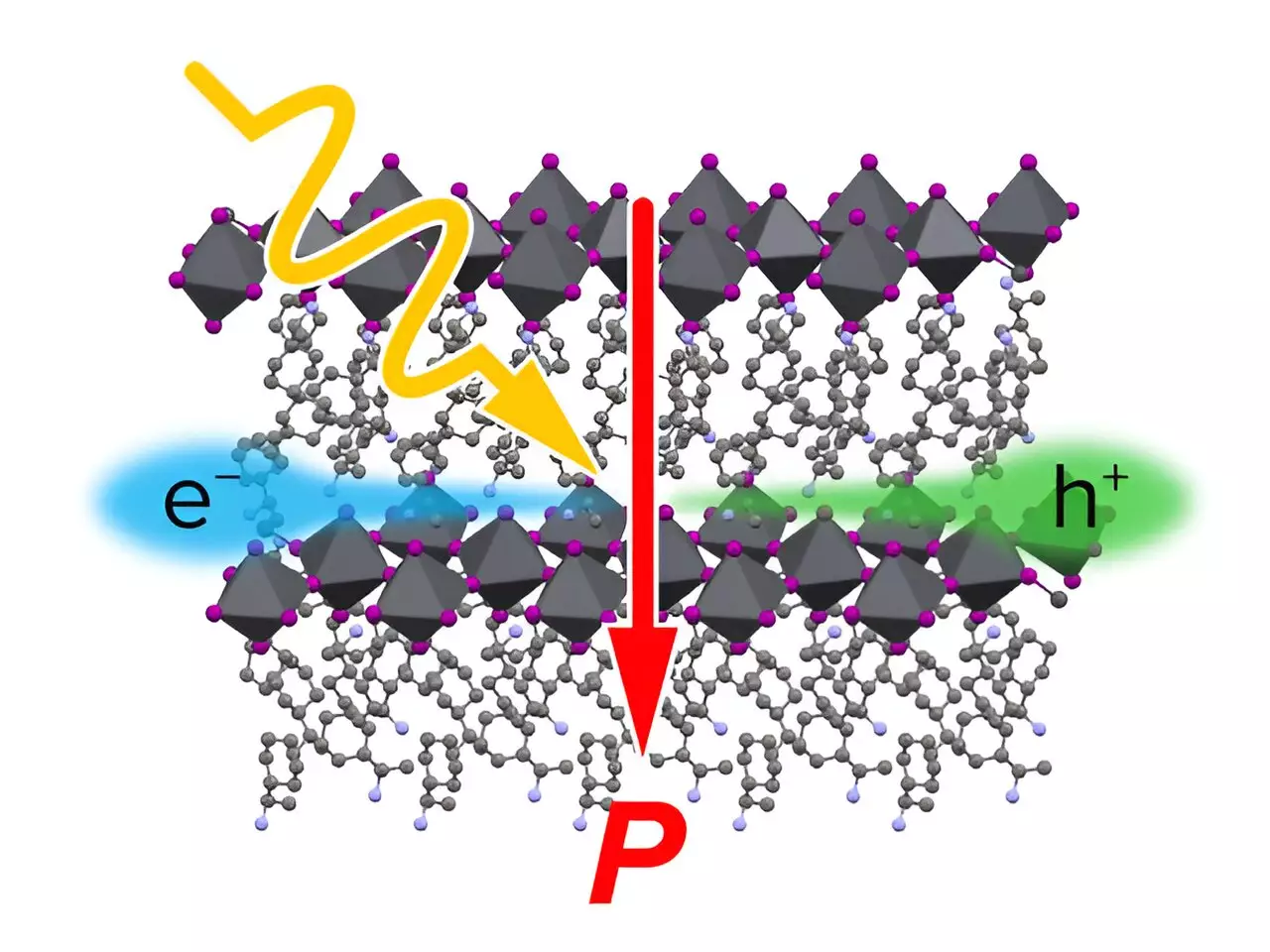The conversion of light into electricity, known as the photovoltaic effect, is a phenomenon that plays a crucial role in the functioning of solar cells. Traditionally, solar cells have consisted of two semiconductors with contrasting electron properties, resulting in high conversion efficiency. However, recent research has shed light on another photovoltaic effect – the bulk photovoltaic effect. In contrast to the traditional setup, the bulk photovoltaic effect occurs within a single material. Although its conversion efficiency is currently low, efforts are being made to enhance its effectiveness. The underlying mechanisms of the bulk photovoltaic effect have been subjects of intense debate among researchers, with new explanations challenging previous assumptions.
Initially, it was believed that polarizations within the material generated an electric field, giving rise to the bulk photovoltaic effect. However, a more recent explanation has gained traction in which light interacts with the material, causing shifts in the electron clouds. These shifts propagate and generate a current, boasting desirable characteristics such as ultrafast response and dissipation-less propagation. Organic-inorganic hybrid perovskites (OIHPs), a type of material holding great potential for optoelectronic devices, have often been associated with the old macroscopic polarization mechanism. However, Taishi Noma of the RIKEN Center for Emergent Matter Science and his team set out to investigate the bulk photovoltaic effect in OIHP crystals and challenge existing assumptions.
Through their meticulous study of the bulk photovoltaic effect in OIHP crystals, Noma and his collaborators uncovered evidence that supports the shift mechanism and refutes the macroscopic polarization mechanism. Notably, they observed the bulk photovoltaic effect in an OIHP crystal along a non-polar axis, a phenomenon that cannot be explained by the macroscopic polarization mechanism. These findings emphasize the significance of the crystal symmetry of the material in determining its photovoltaic properties.
The insights gained from Noma’s team’s research into the bulk photovoltaic effect in OIHP crystals have direct implications for improving the efficiency of OIHPs in converting light into electricity. By tailoring the symmetry of OIHPs, researchers can now optimize their properties, potentially unlocking greater conversion efficiency. This knowledge is invaluable as researchers strive to enhance the performance of solar cells and develop more efficient photovoltaic systems.
Building upon their compelling findings, Noma and his team are now focused on exploring the potential of other materials. The shift currents that generate the bulk photovoltaic effect can theoretically be harnessed in various classes of materials, including liquid crystals and organic molecular crystals. By expanding their research to new frontiers, the team aims to uncover further insights into the conversion of light into electricity and contribute to the advancement of photovoltaic technologies.
The investigation of how crystals convert light into electricity has brought about new insights and challenges traditional assumptions. The shift mechanism, involving the interaction of light with electron clouds, has emerged as a compelling explanation for the bulk photovoltaic effect. Noma and his team’s research on OIHP crystals has provided solid evidence supporting this mechanism and highlighted the critical role of crystal symmetry. Armed with this knowledge, researchers can now work towards enhancing the efficiency of optoelectronic devices, ultimately propelling the development of more effective solar cells. As the field of photovoltaics continues to advance, exploring new materials and mechanisms is crucial for unlocking the full potential of solar energy.


Leave a Reply